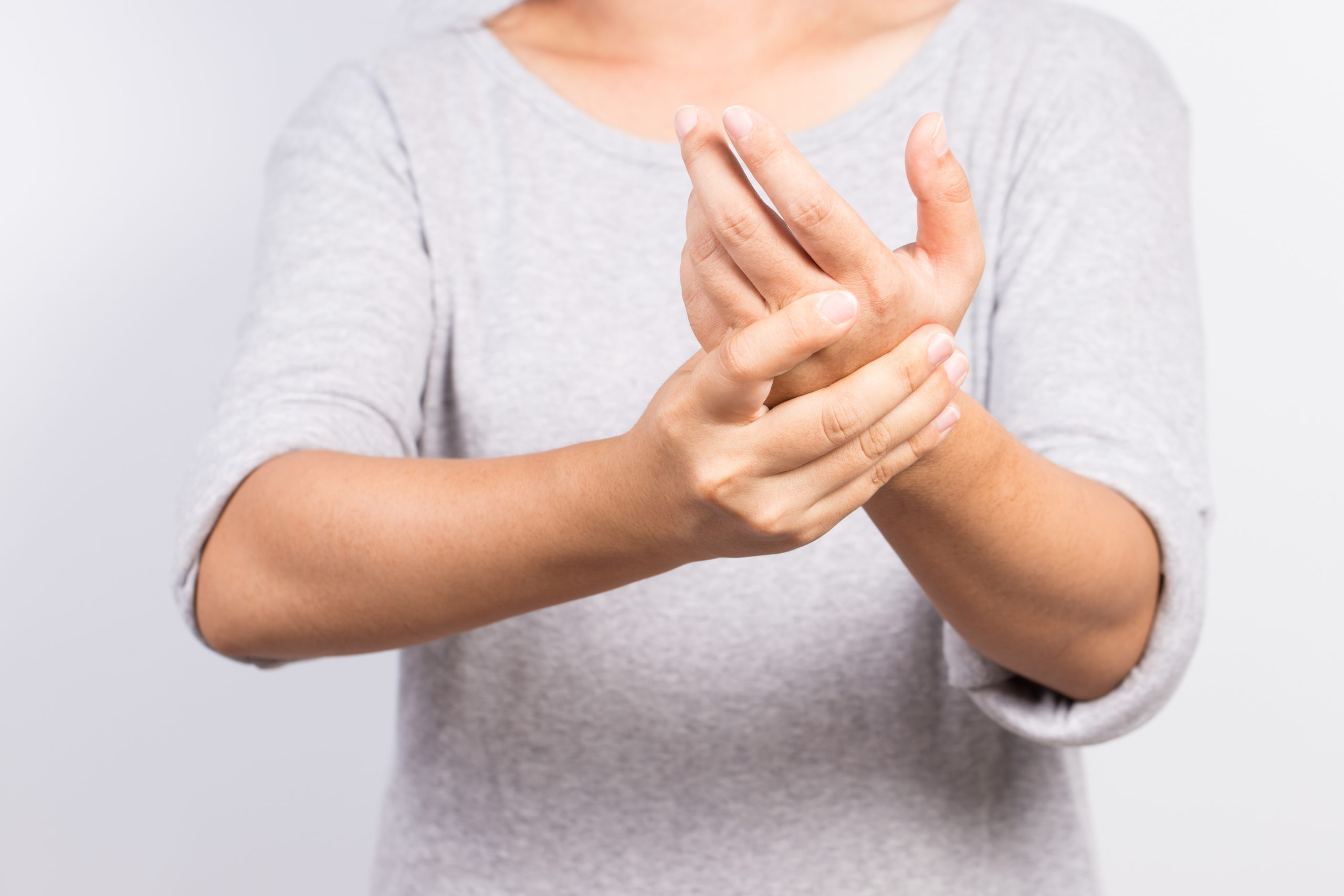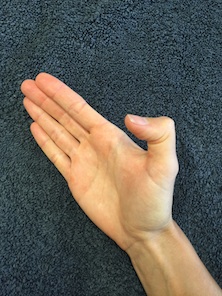
 The thumb is an extremely mobile joint that demonstrates a wide range of movement. A thumb injury can be broadly defined as anything that causes pain or discomfort in the thumb – sometimes this occurs without direct impact to the area itself. The scenario above sounds like a soft tissue injury at the base of the thumb, but this is just one of many common thumb injuries.
The thumb is an extremely mobile joint that demonstrates a wide range of movement. A thumb injury can be broadly defined as anything that causes pain or discomfort in the thumb – sometimes this occurs without direct impact to the area itself. The scenario above sounds like a soft tissue injury at the base of the thumb, but this is just one of many common thumb injuries.
Giving a careful history and having a clinical examination from a hand therapist will assist in confirming the diagnosis.
Common thumb injuries
Broken thumb: A broken thumb refers to a crack or break in either of the two phalanges in the thumb or the first metacarpal. A broken thumb can cause pain, local swelling and tenderness and is either due to a fall or impact from a ball during sport.
DeQuervain’s Syndrome: DeQuervain’s Syndrome (or De Quervain’s Tenosynovitis) is the irritation of the two tendons that insert at the base of the thumb as they pass through the first extensor sheath. The extensor pollicis brevis and abductor pollicis longus muscles are responsible for lifting the thumb up and away from the palm and will be irritated at wrist with thumb movements.
Basal thumb strain: Pain at the base of the thumb may be due to periods of relative overuse, from packing and moving boxes, excessive lifting and gripping, and too much writing. Palpation will help identify the most appropriate splint to provide the patient. Occasionally a soft neoprene support will suffice. Certainly specific proprioceptive and nerve gliding exercises will help, along with massage using Arnica.
Skier’s thumb: Skier’s thumb is due to injury of the Ulnar Collateral Ligament of the metacarpophalangeal joint of the thumb. The ligament can avulse a piece of bone off from its insertion. It often occurs when someone falls on an outstretched hand and the thumb is hyperextended and abducted away from the palm. A hand based thumb splint will protect the ligament and allow pain-free hand function.
Broken hand: A broken hand is when a break or fracture occurs to one of the bones in your hand. A break in the 1st metacarpal can cause pain and discomfort both at rest and with movement of thumb.
Carpal Tunnel Syndrome: Carpal tunnel syndrome occurs when the median nerve that passes through the carpal tunnel becomes compressed. This may cause symptoms of numbness, pins and needles or tingling, and weakness in the thumb, and is generally worse at night.
Clinical examinations
For many thumb injuries an X-Ray or MRI may be appropriate, but careful assessment by your hand therapist will advise help determine if this is required.
Treatment
Many common thumb injuries can be managed by a hand therapist. Treatments include hand splints, which will immobilise the area in order to reduce swelling and pain in the thumb. The splint may or may not need to include the wrist. Additionally, appropriate graduated exercises for range of motion and strengthening, nerve gliding and education about the condition will be provided.

 Surgical treatment
Surgical treatment
Surgical treatment maybe required for more serious conditions. Your therapist can discuss this with you and your GP can arrange a referral to a hand surgeon if required.
If you have any questions regarding a condition you have or to book an appointment, feel free to contact the Hand Therapy Group here. We’d be more than happy to help.


